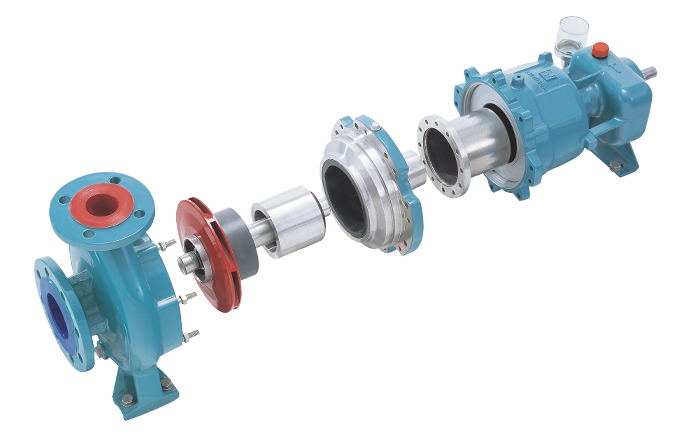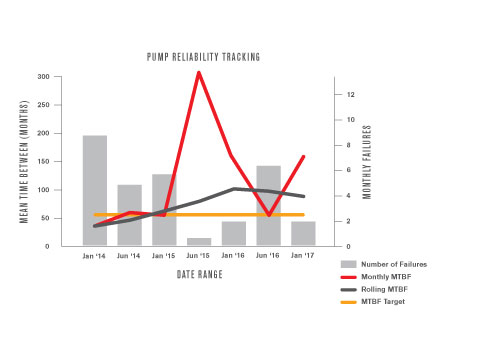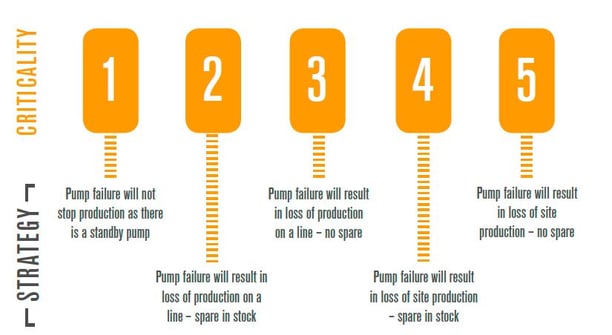Full steam ahead - Scottish distillery with Grundfos
There’s steam and there’s high-quality steam. There are pump solutions and intelligent pump solution...
There is a clear correlation between improving the reliability of critical assets, extending their Mean Time Between Failure (MTBF), and reducing their maintenance costs.

Bring asset management into the equation, and there can also be valuable additional benefits – such as avoiding catastrophic failures, minimising unplanned downtime, rationalising spares purchasing, and reducing the overall unit cost of production. How many more reasons do you need to adopt best practice? The first step towards effective asset management is Condition Monitoring.
Firstly, this enables you to identify potential asset failures and to plan repairs or swap-outs to avoid disruption to production. Secondly, because you identify issues at an early stage, it ensures you can rectify them before a catastrophic failure results.
For a pump that means replacing bearings, seals and rebuilding impellers instead of replacing damaged shafts, pump casings or at worst items around and downstream of the asset if it does go in a truly catastrophic way.
No business wants unplanned downtime. On the other hand, no business wants capital tied up unnecessarily in spares, against the remote possibility of a critical asset failure. But getting the size and shape of the spares stock right can be exceptionally difficult without the right data to base your decisions on.
For example, you may have six pumps of one type on your site which, if they fail, will reduce or even halt production.
However, because you know it’s unlikely two pumps of the same type will fail at the same time, you only have one spare in stock. But as soon as one pump fails and you use your spare, the five other pumps all become vulnerable. And if that type of pump is on a long production lead time, the vulnerability will be longlasting and another pump failure will be disastrous for production.
The solution lies in data.

You need to know the criticality of each pump. You need to know the MTBF of each type of pump. And you need to know the manufacturing lead time and assess the Mean Time To Repair (MTTR).
Only with all these facts and figures to hand can you develop a spares strategy which will optimise costeffective spares coverage, to minimise potential loss of production through an unpredicted asset failure.
When ERIKS Asset Management recently conducted an analysis of pumps, spares strategy and criticality at the UK production site of a global beverages manufacturer, it began with the production of a Pump Reliability Tracking graph, and statistics for Mean Time
A criticality analysis was then carried out, highlighting which pumps required spares in stock to reduce their criticality level:

Lastly, the MTTR of each pump type was established, to identify how many spares of each were required.
Once a spares strategy is defined in this way, spares standardisation and rationalisation can follow. A supplier like ERIKS – with close working relationships with leading manufacturers – can ensure your purchasing and stocking provides sufficient coverage, whilst at the same time reducing costs.
Effective asset management should maximise MTBF. To do that, it’s not enough just to look at monitoring assets, predicting failures, and scheduling swap-outs and repairs for when they’ll least affect production. It’s also necessary to identify the root causes of failures, and to take mitigating actions to prevent repeats.
This demands specialist knowledge covering the pumps themselves and all connected equipment.
Applying ERIKS’ know-how at the beverage manufacturer’s site helped the customer to achieve a pumps MTBF of up to 100 months, against an industry target of 60 months. This meant a reduction in annual pump system maintenance costs from £250k to £100k.
But improved reliability, increased MTBF and reduced maintenance costs can be realised for far more than just pumps. Any critical assets which – if they failed could reduce or halt production can benefit from best practice and ERIKS Asset Management.
Get the latest updates from ERIKS including:
Choose any or all of these via the ERIKS Subscription Centre!
Our Know+How brings together the best of the latest Know+How Hub articles in one easy to digest magazine, covering the following topics:
That's why its the leading magazine for maintenance engineers from ERIKS.
Want Know+How Magazine delivered direct to your door? Visit the ERIKS Subscription Centre to opt-in!
Take a look at our latest updates...
There’s steam and there’s high-quality steam. There are pump solutions and intelligent pump solution...
Looking for a custom Product quote? Need an answer to a Technical question? Looking for Careers/HR support? Want to work with us? Interested in our Digital Trading solutions? Have a finance question? Send us your enquiry and a member of the ERIKS team will be with you quickly.
We strive to deliver exceptional quality service and products. As part of this goal, we encourage customers to submit feedback on their experiences so we can resolve any issues and concerns.
At ERIKS we strive to deliver the best quality service and products. As part of this goal we encourage customers to submit feedback on their experiences so we can resolve any issues and concerns.
Call us: +441215086000
